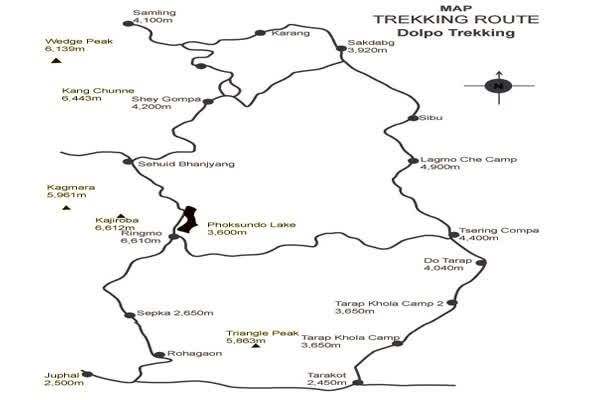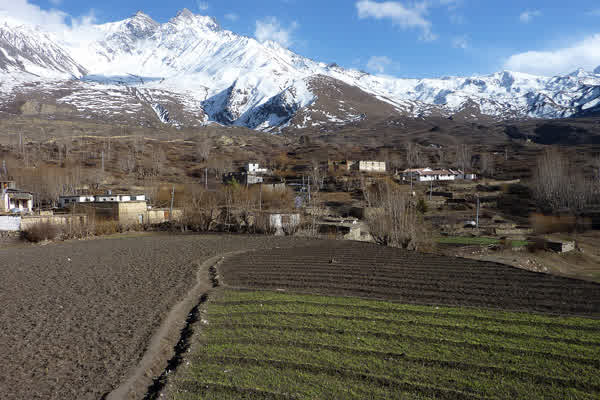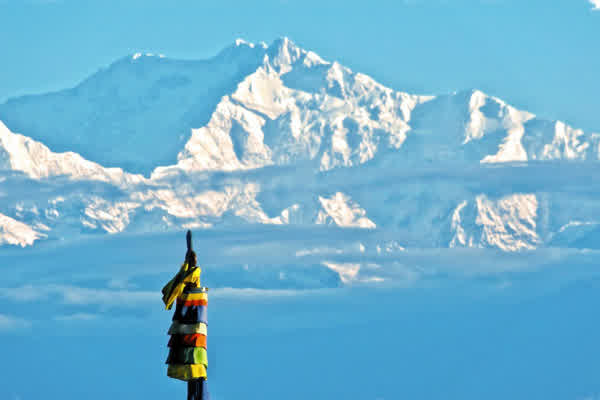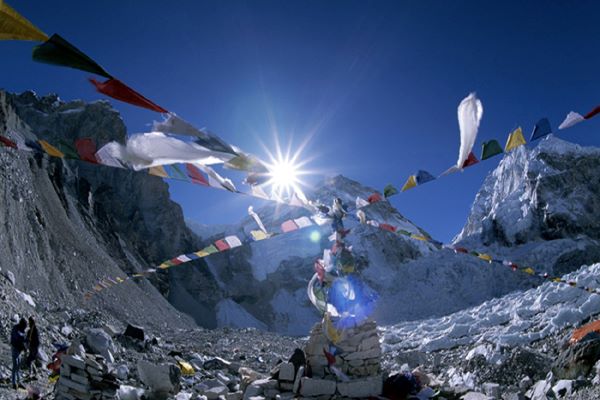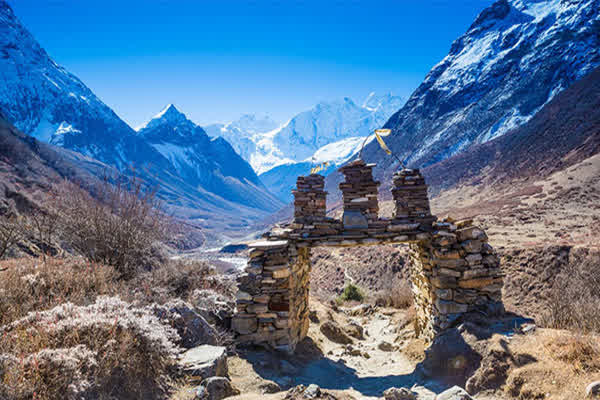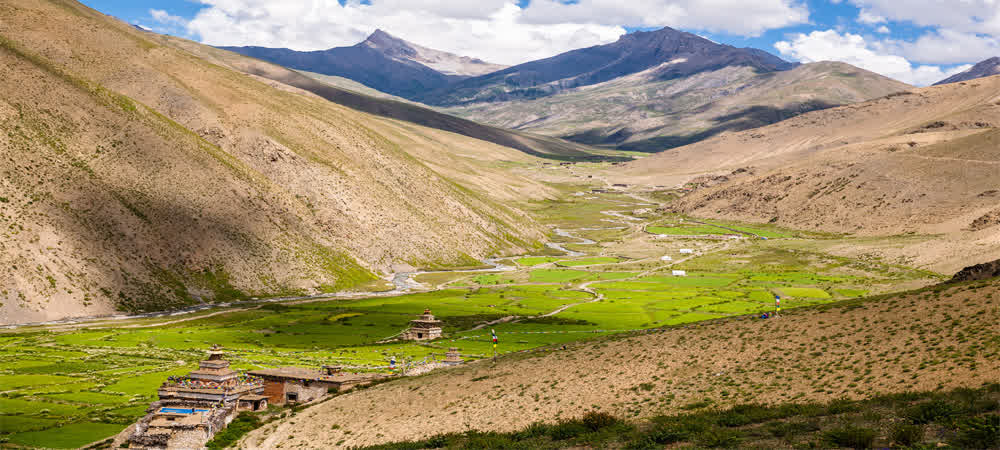
- Overview
- Itinerary
- Price & Dates
- Useful Info
- F.A.Q.
- Gallery
Facts of this Trip
Upper dolpo trek
Upper Dolpo trek leads to the land beyond the Himalayas, green wild hidden valleys passes, invokes up visions of mysterious monasteries, the last enclave of pure Tibetan culture, snow leopards and blue sheep. It is situated in the Shey-Phoksundo National Park at mid-western part of Nepal, right behind the massive Dhaulagiri, only a few trekkers and adventure traveler rarely trek to this region because of its adventure physical feature than the other trekking region of Nepal. Where the two-way flight is an incredible part of this splendid adventure trek to Upper Dolpo, Shey Gompa, and Bonpo traditions. This region is an isolated area which has been strictly off-limits until only recently, so the traditions and way of life have remained intact. Upper Dolpo trek is a mystery for the trekker which makes an incredible with the unexpected combination to create a daunting mental picture of this remote region, almost lunar landscape of rocky brown and grey rubble, devoid of warmth or indigenous life, occasional blue sheep and home of invisible snow leopard. This trekking takes ahead to different adventures high passes and the steep rocky trail through the forest with the sceneries of the scenic waterfalls.
Upper Dolpo trek route passed many massive mountain ranges - Annapurna, Dhaulagiri, and Kanjiroba, to name but a few - and passed through Lower Dolpo, at one time a small kingdom in its own right. The trekkers of this regions are inspired significantly about the wild remoteness, splendidly amazing landscapes, magnificent mountain scenery and the fact that the local people had that innocent friendliness peculiar to stay in remote mountainous regions.
The adventure journey to Upper Dolpo trek is begins with a scenic flight from Kathmandu to Nepalgunj a large business city near the border to neighbors’ country India to the low plain land with a sub-tropical climate. And the next day continues the flight to Juphal airport at Dolpo. During the short flight, you will see the magnificence landscape, snowcapped Himalaya’s ranges and so on. The meandering trekking trail leads towards Dunai a district headquarter of this region and then continues ahead Shey- Phusksundo Lake near the Ringmo village. Unpredictable background views of Himalayan range and surrounding landscape our trail pass towers the Nangdalo and Kang- la high pass and make exciting. It offers incredible views of Kagmara peak and as far to Mt Dhaulagiri ranges. Scenic scenery of the beauty pulled us towers our final destination at Shey Gompa beneath a magic Crystal Mountain surrounded with semi-precious stones. This isolate destination is the place of great ancient and historical importance of Tibetan Buddhist culture, some of the oldest monasteries in the country. After the amusing overnight stay at the local lodge in the rest day excursion local remote villages of Shey Monastery, Somdang and pass some passes leading towards the southeast arrive at Tokyu and Dho-Tarap large exquisite villages in this trek. An adventure trial continues leads to the Dho-Tarap river valley, Tarakot. It is one of the interesting village and valley with incenting historical background from Malla dynasty. From that a short hike and short drive to Juphal and return towards Kathmandu. Finally, our adventure Dolpo trekking is finished with a lifetime memorable moment of life at a wild western remote region of Nepal.
Trip Itinerary
Arrival at Kathmandu
At your arrival at a Tribhawn international airport, Kathmandu our representative from Alfresco Adventure Travel wait for you outside at Arrival gate with your Name card. Our team will welcome and collect your baggage at the airport. By formal introduction with the representative and transferred to your hotel. In the evening you will enjoy complimentary welcome dinner in a typical Nepali restaurant with Nepalese cuisine. Overnight at hotel.
Sightseeing around Kathmandu Valley and Pre trek Preparation
After breakfast, our office representative and your trekking guide and support staff will meet you on the hotel and discus about all programs and coordinate any last-minute arrangements. After staff meeting, one of our professional tour guides will take you for a sightseeing trip and then back to the hotel. Rest of the day can be used for travelling around Thamel and buying any last minute equipment and other necessities. Overnight at hotel.
Fly from Kathmandu to Nepalgunj
As per the flight schedule for Nepalgunj, we transfer to the domestic airport for one and half hour scenic flight to Nepalgunj. At Nepalgunj, we will have time in the late afternoon or evening to have a look around the town which is situated on the southern Nepal border with India. Here it is quite hot and tropical in character. Overnight at hotel.
Fly from Nepalgunj to Juphal (Dolpo) (2,320m/7,610ft), trek to Dunai,
After a pleasant overnight at Nepalgunj, early morning transfer to airport for the 45-minute flight to Juphal over the Himalayan foothills, with views of Annapurna and Dhaulagiri peaks to the north. On arriving at Juphal our trekking staffs will receive you, who have walked all the way from Nepalgunj with the camping gear and food supply taking 5-6 days. Here at Juphal, a short 2-3 hrs. walk from the airstrip leads to our overnight camp at Dunai village. Our first-day adventure begins with an hour downhill walk through the village below the airstrip, then leading through the terraced fields to the Bheri River and the narrow gorge taking 2-3 hours to camp at Dunai. This is a much larger village or small township, with a new hospital and it is administered headquarter of the Dolpo region. Here we have ample time for the leisure walk around the village.
Trek to Ankhe, 5-6 hrs.
From the camp at Dunai, route diverts from the King Mahendra statue to cross the new suspension bridge and turning west, following the trail past the hospital. The path soon begins to climb up the side of the treeless Thulo Bheri valley, where it crests a ridge and then enters the Phoksundo river valley, finally reaching another ridge which is marked by cairns at 2,499m/8,197ft. During the walk can be seen an excellent view of the Kagmara Peak up the valley. This wonderful walk leads to a large side canyon, then descending gently on the long downhill slope through the scattered houses and walnut groves to a stream at 2,810m/9,217ft the trail below the stream leads to Dhera, a winter settlement where people from higher villages keep herds of cows and goats, however the route leads the upper trail climbing to Rahagaon, a Thakuri village at 2,900m/9,512ft, where there is a Gompa dedicated to the local god, Mastha, guardians of this village. Trek from here passes through the lower part of Rahagaon and then descending to the village water supply at the Phoksundo Khola. Passing through another canyon, the path heads downhill through deep dark forests to a large stream, finally emerging at the entrance to the Shey Phoksundo National Park at Ankhe (2,896m/9,499ft) where we will stay for the Overnight at tent or Tea House.
Trek to Sulighat, 5-6 hrs.
The path from this camp leads to small ups and downs along the forested riverbed, then ascending steeply to about 2,900m. The ups and downs can begin to get a bit monotonous, but there are several streams along the way that offer a chance to cool off. The trail eventually leaves the forests and traverses a grassy slope high above the river. After a while, the path once begins to descend steeply into the forest until it reaches a cliff, whereby a dizzying drop on a wobbly stone staircase to the river bank has to be undertaken. You can almost look down between your toes to see the fast-flowing river below. After reaching the river at 2,950m, the trail becomes a collection of rocks and sticks that form a dyke along the river bank. It's hard to imagine how the local people bring their yaks and cows along this trail, but they do. The journey continues upstream to a bridge near Ryajik village for the overnight camp 3,500m/11,480ft, after a good day's walk. Overnight at tent or Tea House.
Trek to Phoksundo Lake - (3620m) 4 hrs.
It takes about 4 hrs. To reach Phoksundo Lake. We have to climb steep about 2hrs. Before reaching the top, we can have the new of Nepal’s highest waterfall, a spectacular waterfall of 107m high knows Phoksundo waterfall as known as sunlight waterfall. Then we will descend from the top to get Ringmo village a small charming village. People residing here practice Bonpo religion, religion related to Buddhism but it is older than Buddhism. The religion was founded by Buddha Lonpa Shanrab Miwo, 18000 years ago. It is believed that Dolpa used to be the center of Bon Kindom called Zhang. It a big and powerful kingdom in present western and north western Tibet. It is believed that in the century Zhang was defeated by the Buddhist kingdom of Tibet and Bonpo disappeared completely, but still some people practice it. Overnight at tent or Tea House.
Rest Day at Phoksundo Lake
A well-deserved rest day free from packing, at Phoksundo we can go for a short hike to the village of Ringmo and its Tibetan Buddhist Monastery is well worth a visit
Trek to Phoksundo Khola (3,507m) - 6 hrs.
You follow the trail that skirts the edge of the lake itself. This precarious trail is suspended on a gangway of wood supported on pegs, driven into crevices in the rocks and signals the remoteness of the area you are about to enter. You go very steeply up, to 4,040m, and then plunge down again to the valley bottom to enter the floodplain of the Phoksundo Khola and trek to your night stop alongside the river, within the confines of the forest to avoid the worst of the wind which is prevalent in the valley bottom. Overnight at tent or Tea House.
Trek to Phoksundo Bhanjyang, 6-7 hrs.
Today's first-hour walk leads along the level path through a glacial valley that now heads due north. At the confluence of the Phoksundo Khola and another mountain stream, there is an old wooden bridge. Here taking the barely distinct path to the north-east of the valley. There is no trail as such, so it is necessary to clamber over the rocks and boulders and to ford a stream that rushes down the steep valley. A long climb brings us to a sheep meadow where the trail veers up a steep ravine. A hard climb to the top brings to yet another valley where one can see the Kang-La, the pass which will lead towards Shey Gompa. Overnight camp will be just before the pass in a place that Peter Matthiessen christened 'Snowfields Camp or Tea House.
Cross the Kang La pass (5,151m) and trek to Shey Gompa (4,126m) - 7 hrs.
The somewhat indistinct track is physically demanding, especially on the loose slate screed. It will take about 2.5 to 3 hours to reach the top of the Kang La. The views from the top are magnificent and well worth all the hard work. The height of the Kang La is variously given between 5,200m and 5,500m depending on the map one uses. On descending steeply to the valley floor, not more than 45 minutes, you make a long meandering trek along the banks of the river, crossing it once. A red chorten heralds your arrival at Shey Gompa where a quaint wooden log bridge leads up to the Shey compound. Overnight at tent or Tea House.
Rest Day - Shey Gompa
You can explore around Tsakang Gompa which is at about 4570m. It is not really a monastery but a retreat. Tsakang had been a meditation center of many famous lamas from Tibet. Shey Gompa belongs to the Chaiba community, followers of the Padmasambhava and Kagyu sects. It was the first Kagyupa monastery and its founder was the lama Ten-szin-Ra-Pa. The monastery was built during the 11th century. Shey is famous for its ancient Buddhist culture. In Dolpo, the ancient Tibetan way of life combines animism with the teachings of Buddha. Drum up Yeshe introduced Buddhism in the Dolpo valley. Many years ago he came to Dolpo and came across a wild people whose supreme God was a 'fierce mountain spirit'. Crystal Mountain is to the west of Shey monastery. It is a very strange mountain indeed. Its contorted cliffs are laced with quartz and embedded with a rich variety of marine fossils. Shey Gompa stands above the confluence of Kangju Nala and Yeju Nala. Near the confluence, there is a group of prayer mills turned by water wheels. Overnight at tent or Tea House.
Trek to Namgung - (4430m) - 6 hrs.
To get to Namgung, we have to cross the pass Sheyla which is also called Glen La is about 5000m. While we are through the Glen pass, we can see the beautiful view of the northern part of the Tibetan plateau, which is the highest plateau in the world. To the east, we can see Mustang. After through pass, we have to descend to the pastures of Namgung. Peoples of Namgung heartily welcome us. It is a beautiful place with a friendly environment. Overnight at tent or Tea House.
Trek to Saldang, 4-5 hours
On leaving the Namduna Gaun our route leads to a climb up a scree slope. Further on it begins a long traverse along some dusty barren mountains. After 3-4 hours of the hard climb, Saldang 3,620m/ 11,874ft appears below on a plateau high above the Nam Khongmala. It has a picturesque appearance. Saldang is the largest village of the inner Dolpo area. Though the village lies at about the same altitude as Ringmo it is totally different then Ringmo, a Himalayan village is situated below the tree line while Saldang belongs to the arid zone of the Trans-Himalayan Tibetan plateau. The village stretches for nearly two kilometers on an open slope. Saldang consists of five villages having about eighty well-built houses with nearly six hundred people. Saldang is a prosperous village not only agriculturally but also for its strategic location on a trade route to Tibet. After the Chinese invasion of Tibet in 1959, trade with Tibet was virtually stopped. It has been restored to some extent through the barter system by which Tibetan salt reaches mid-Nepal. The Drokpa people from the western plains of Tibet collect salt from the dried lakes north of Tsangpo. Overnight at tent or Tea House.
Trek to Saldang (3,903m) - 4 hrs.
Leaving Namgung monastery and start climbing. Further on it begins a long thrilling traverse along some dusty barren mountains. Looking down into the valley bottom it is very evident that the people have made the best use of the fertile valley as one sees the neatly terraced fields showing bright patches of green and ripening crops. You ascend before going down steep slopes to the picturesque village of Salding, situated on a plateau high above the Nam Khong nala and the biggest village of the inner Dolpo area. Though the village lies at about the same altitude as Ringmo, it is totally different. Ringmo, a Himalayan village is situated below the tree line while Saldang belongs to the arid zone of the trans-Himalayan Tibetan plateau. The village stretches for two kilometers on an open slope and consists of five villages having eighty well-built houses with nearly six hundred villagers. It is prosperous, not only agriculturally, but also for its strategic location on a trade route to Tibet. Overnight at tent or Tea House.
Trek to Sibu (3,942m) - 6 hrs.
After leaving Saldang on the way down to the river bed you pass through terraced fields, Stupas, Chortens, heaps of Mani stones and a Chaiba monastery. Namdo, the next village is also prosperous with sixty houses having nearly four hundred inhabitants. It stretches for more than 5 km on the high slopes to the left of Nam Khong Khola. The Namdo monastery is located near the river bed. There is also another monastery on top of a high cliff. Overnight at Tent or Tea House.
Trek to the foot of the Jengla - (4480m) - 4-5 hrs.
We will follow the line of the river valley and the trail is easy going initially. But after two hours, we must make another stream before turning into side valley where the rise becomes very sharp. Overnight at tent or Tea House.
Trek to Tokyu Gaon via Jeng la, 5-6 hrs.
Morning trek leads to two hours climb towards the top of the Jeng La (5,090m/16,695ft). An excellent view of snow ranges emerges to the south. The north face of the Dhaulagiri massif shines in the morning light. After a wonderful moment here at the pass, our walk leads to descending on the rough path towards Tarap valley. By afternoon we come to the green valley which leads us on the pleasant track down towards Tarap Chu. Tarap is a fascinating valley with vast plains in high mountains. It extends twenty kilometers along the river. Tarap Chu is having ten villages with its cultivated fields and many gompas, chortens of both sects. We stop for the night at Tokyu monastery (4,200m/13,776ft). This monastery also belongs to the Chaiba sect. Overnight at Tent or Tea House
Trek to Dho Tarap (4,090m) - 4.5 hrs.
Before leaving Tokyu a short visit can be made to the Chaiba Gompa. The trail is broad and well-traveled, making the going easy and there is evidence of work in the fields, where the women will be bringing in the harvest - the men are away bringing down the herds of animals for the forthcoming winter. There are many Mani walls but some of the Chortens are in a bad state of repair. The ' French School ' is just outside the village of Dho Tarap where you have your night stop. Tarap is inhabited mostly by Magars who have lived here for generations but also by a few Tibetans. They wear home-spun clothing that is sometimes dyed maroon and they favor Tibetan style Somba (boots with upturned toes) for footgear. Men and women often wear both religious amulets and strings of coral and turquoise. The inhabitants of this village are both Bon Po and Buddhist (Nyingmapa). In the afternoon a walk up to the Buddhist Gompa is very worthwhile. There is a resident lama who is very happy to show off his monastery and might even let you see his private Gompa and the Tankas he has made himself. The Bon Gompa is about half an hour's walk from camp. Overnight at the tent or Tea house..
Rest Day at Dho Tarap
Today, we have a full rest day or exploration of local areas. During the visit, you will have an opportunity to make friends with the people from Dolpo. They wear homespun clothing that is sometimes dyed maroon and they prefer Tibetan style somba (boots with upturned toes) for footwear. Men and women often wear both religious amulets and strings of coral and turquoise. The villagers are both Bon Po and Buddhist of Nyingmapa sect. The Buddhist Gompa is the nearest one to the accommodation, the Bon Gompa is further 40 minutes’ walk. Overnight at the tent or Tea house.
Trek to Serkam - (3623ft.) - 7 hrs
The next two days are longish with a choice of several different campsites so the itinerary can be flexible. Your route follows the course of the Tarap Khola, generally downhill. You go through narrow gorges with the river rushing through. One may see blue sheep, marmots, yaks, sheep, and goats and perhaps meet people from Dolpo taking their flocks of sheep and goats to lower pastures for the winter. The afternoon brings more undulations in the path when it leaves the immediate course of the river. There is evidence of improvements to the trail where parts of the rock have been blasted out. You will also see the first of the modern steel suspension bridges which have been built to facilitate the movement of people and animals. The track is very narrow in places. Overnight at the tent or Tea house.
Trek to Tarakot, 4-5 hrs.
Today from this camp path follows an indistinct trail to the village of Lalberi. Then passing through an area of impressive forest, before descending into another gorge our walk continues following the river again downstream to reach Tarakot where colorful terraced fields greet us. Tarakot (2,537m/8,321ft) is an old fortress town known by the local people as Dzong, meaning 'fort'. Before the Gorkha dynasty, Tarakot was the capital and had a dzong. The famous Sandul gompa lies about 8 km east of Tarakot and at the junction of Barbung Khola and Tarap Chu. It stands on a knoll to the south of Bheri River and at one time supervised collections of tools for the trading caravans traversing an area called Tichu Rong. It is possible to camp by the river about 150 meters below Tarakot, near the police post or we climb a steep hill for over an hour to the small village on a spur on the other side of a valley opposite Tarakot. There are chortens and a Gompa here on the edge of a grassy plateau, with an interesting solitary tree.
Trek to Dunai (2,052m) - 5 hrs.
The trail is mostly down and fairly firm. Walking beside the Bheri River, you use the ingenious path built twenty feet above the river. All too soon you have reached the village of Dunai and the campsite you used before. You will now have completed the circuit of mysterious land Dolpo and a celebration party is sure to happen. Overnight at tent or Tea house.
Trek to Dunai (2,052m) - 5 hrs.
The trail is mostly down and fairly firm. Walking beside the Bheri River, you use the ingenious path built twenty feet above the river. All too soon you have reached the village of Dunai and the campsite you used before. You will now have completed the circuit of mysterious land Dolpo and a celebration party is sure to happen. Overnight at tent or Tea house.
Trek to Juphal (2,404m) - 3 hrs.
You now retrace your steps to Juphal. Initially, the way is flat but the final hour up to your destination seems steeper than you remember on Day One! Overnight at tent or Tea house
Fly from Jhuphal to Nepalgunj to Kathmandu
Early morning, a short scenic flight for thirty-five minutes to Nepalgunj, over the Himalayan foothills overlooking stunning views of the main peaks including Annapurna and Dhaulagiri to the north. On arrival at Nepalgunj depending upon the connecting flight schedule to Kathmandu. If it is in the afternoon have time for few hours’ refreshment in the comfort of the Hotel Batika or similar at Nepalgunj. Then connect with the flight back to Kathmandu.
Leisure at Kathmandu
This pleasant day you may have the full day at leisure and either relax at the hotel or explore the Thamel, free or last minute shopping for souvenirs or gift to your family, friends or relatives for you until your departure flight/drive or to commence any extra trips or activities you may have booked with us and in the evening you will enjoy complimentary welcome dinner in a typical Nepali restaurant with Nepalese cuisine. overnight at hotel.
Final Departure
Today is your last day with us in Nepal. You will escort to the airport for your onward destination with the unforgettable moment of your life from the wonderful Upper Dolpo Trek. Our office representative came at your hotel for pick up and drop you at the airport.
Price & Dates
Upcoming Fixed Departure Date and Offer Price.
Trip Cost Includes
- Arrival and Departure by comfortable Private vehicle
- Domestic air flight ticket
- All necessary paperwork, trekking permits and Restricted Area Premit (National Park Permit, TIMS)
- 3 star accommodation in Kathmandu and lodge at Nepalgunj on BB plan (with breakfast)
- Tea house or camping accommodation during the trek (Include breakfast, lunch, Dinner)
- Welcome and Farewell dinner in typical Nepal restaurant with Nepal food
- All land transportation is arrange as pre the itinerary in a comfortable vehicle
- City tour in Kathmandu with expert guide by private vehicle
- All entrance fees and government and local charges for sightseeing/monument visits as per the itinerary
- An experienced English spoken and government certified trekking leader, guide and assistant trek leader or guide
- Poter service (2 trekkers = 1 porter)
- Staff cost including their salary, insurance and allowance
- Medical kit (carried by your trek leader or guide)
Trip Cost Exclude
- Your Medical and Travel insurance
- Personal Belong items
- Personal expenses, shopping, Beverage bills and so on.
- Tips for staffs
Useful Info
Useful information
Frequently Asked Questions.
Media Gallery
Please click on small photos to have larger view.

